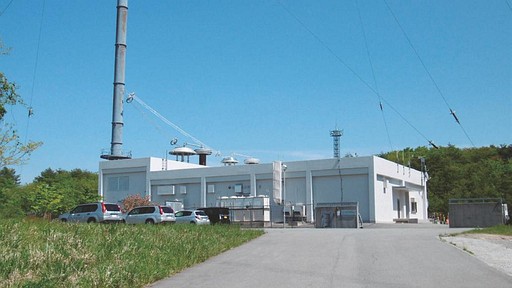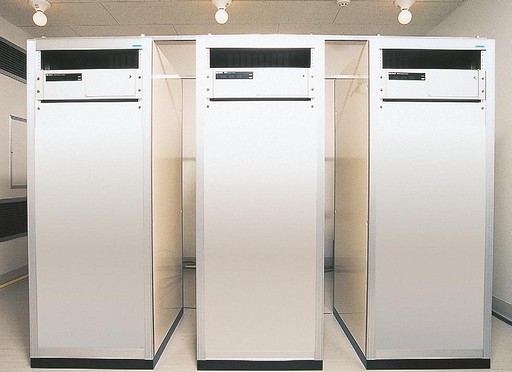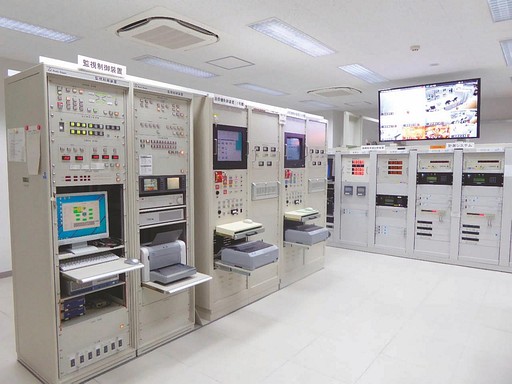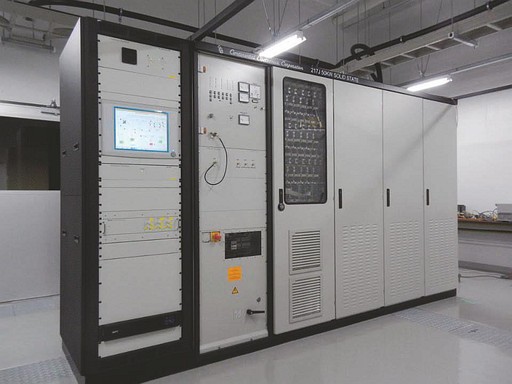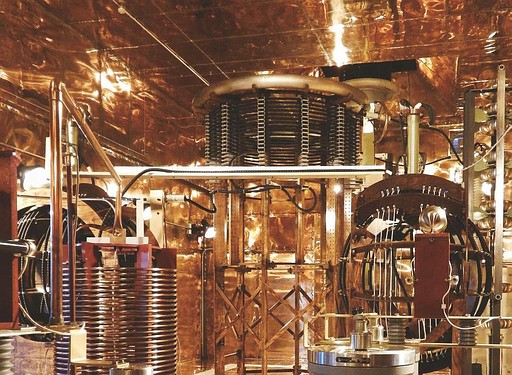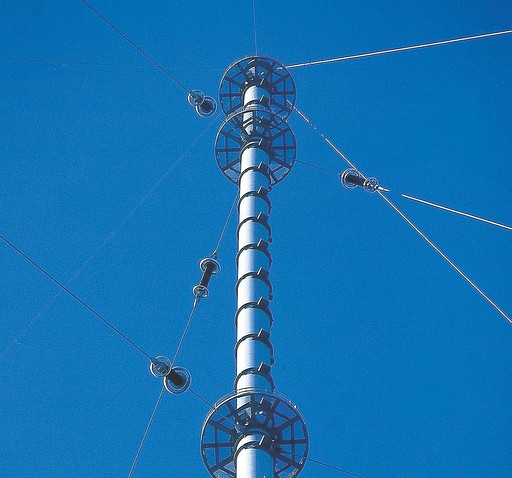JJY - Standard Radio Signals
The National Institute of Information and Communications Technology (NICT) is responsible for maintaining and distributing Japan Standard Time and Frequency. This task includes the transmission of standard radio signals available throughout Japan. The call sign JJY of the transmission stations, which has been in use since 1940, is a registered trademark (T4355749) of NICT.
Standard radio signals are transmitted by low frequency (LF) radio waves and contain encoded time information superposed on a highly precise carrier frequency signal. The standard time and frequency signal is synchronized with the national standard maintained by NICT. But even though the uncertainty of the transmitted signal directly at the station can be as small as 1×10-13, the received signals are affected by factors such as conditions in the ionosphere. Such effects are particularly large in the HF band, and degrade the frequency precision of the received signal to deteriorate to nearly 1×10–8, which means that the frequency may differ from the standard frequency by 1 part in 100,000,000.
This is why the standard radio signals are broadcast in the LF band, which is less susceptible to ionospheric conditions. This allows signals to be received with an uncertainty of 1×10–11 when measured over 24 hours. That is only 1 part in 100,000,000,000. The standard radio signals are available continuously and are interrupted only when maintenance is required or to protect the transmitter from damage by lightning strikes to the antenna. The latest status is available here.
Current transmission status:
For continuous updates, follow @JJY_NICT on X (formerly Twitter).
on X (formerly Twitter).
A log of status updates is available here (Japanese):
40 kHz station at Ohtakadoya-yama
60 kHz station at Hagane-yama
(earlier years)
The easiest way to use the standard radio signals is through a radio-controlled clock that can receive them throughout Japan and will automatically display the correct time. But the signals are also received to synchronize the master clocks of broadcasting stations or telephone time signal services with JST.
Additional information
Frequently asked questions on radio-controlled clocks
Answers for general question on radio controlled clocks or the standard radio signal.
Agreement of the JJY signal with Japan Standard Time
The time and frequency transmissions are constantly monitored. Please check the information collected here if your application requires the highest possible accuracy.
Deviation of received JJY signal from Japan Standard Time
The frequency and phase reception is also constantly monitored.
The JJY signal
Details on the format of the transmitted JJY signals and their expected amplitude. If you are a radio enthusiast, you can send us a reception report!
Transmission stations
Ohtakadoya-yama (40kHz)
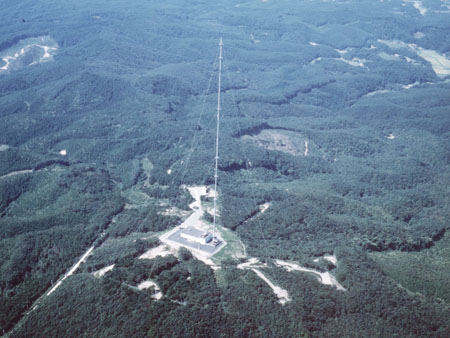
250m high umbrella antenna
50kW antenna power
(about 25% antenna efficiency)
radio wave emission class A1B
Location:
37°22'21"N, 140°50'56"E
 ,
,
near the summit of Ohtakadoya-yama (at 790m elevation), on the border between
Miyakoji, Tamura City and Kawauchi Village in Futaba County of Fukushima Prefecture
Total area of facility:
approx. 88,668m²
Hagane-yama (60kHz)
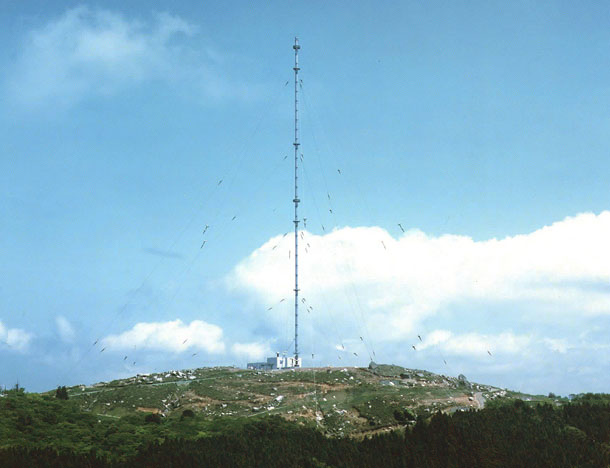
200m high umbrella antenna
50kW antenna power
(about 45% antenna efficiency)
radio wave emission class A1B
Location:
33°27'56"N, 130°10'32"E
 ,
,
near the summit of Hagane-yama (at 900m elevation), on the border between Fuji,
Saga City of Saga Prefecture and Itoshima City of Fukuoka Prefecture
Total area of facility:
approx. 115,803m²
In both transmission stations a local time is maintained based on high-performance cesium atomic clocks operated in the frequency standards room. Satellite links are used to compare this to the Japan Standard Time at NICT's headquarters in Koganei and adjust it as required. The Standard Time and Frequency signal is generated based on the adjusted time, and this signal is then amplified by the transmitter and broadcast to all of Japan by a large umbrella antenna.
Each station has a second transmitter for redundancy and a backup generator to continue operation during power outages.


